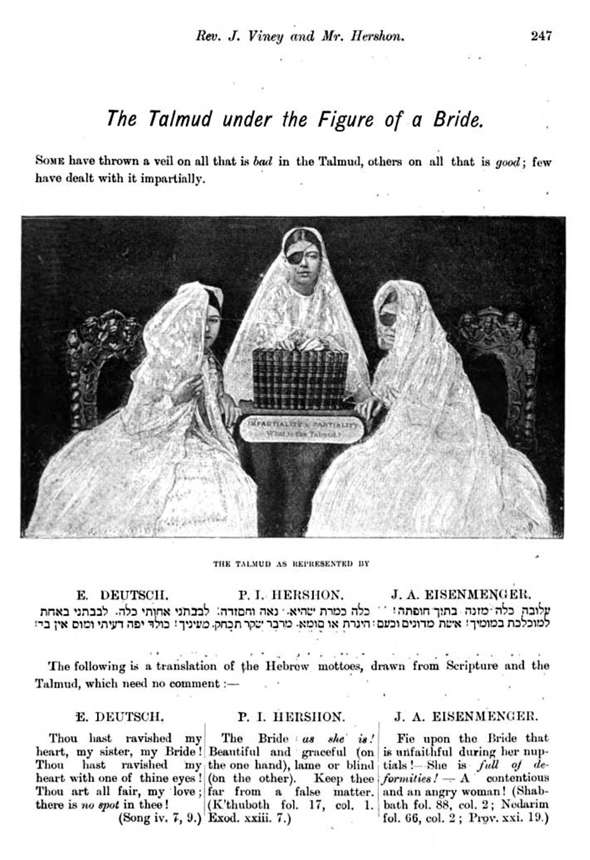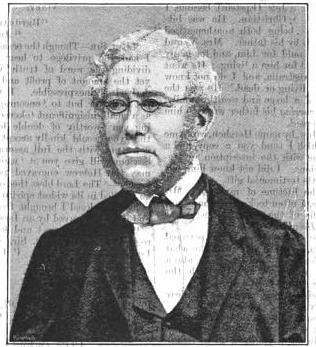
This is from an 1894 book called Memories of gospel triumphs among the Jews during the Victorian era by John Dunlop, all about how successful British missionary efforts were during the 19th century.
This particular exceedingly strange posed picture is meant to illustrate three approaches of three writers on the Talmud; hot, cold and just right. The brides represent the flawed beauty that is the Talmud and as described by a different writer. As you can see by the caption, the point is that one writer veiled all that is bad in the Talmud (on the left, so that you cannot see she has one eye patch), one writer veiled all that is good (on the right, so that you cannot see that she has one good eye), and the other wrote of it impartially (in the middle, with one patch and one good eye). The impartial one is Paul Isaac Hershon, a converted Galician Jew born in 1818, who wrote אוצרות התמלמוד (Treasures of the Talmud, being a series of classified subjects in alphabetical order from "A" to "L"). He died in 1888.

The writer who veiled all that is bad is Emanuel Deutsch, who wrote a very famous article which was widely read all over Europe, called Der Talmud, and the writer who veiled all that is good is Johann Andreas Eisenmenger.





Typofinder says: The URL, the title, and one other place has "approached" instead of "approaches."
ReplyDelete> "The impartial one is Paul Isaac Hershon, a converted Galician Jew"
Whenever I read "converted Jew" I always have to pause and think, "wait, does the writer mean converted TO Judaism, or converted FROM Judaism?" Would you mind clarifying for slow folks like me?
Final comment: I think that if I were the photographer, I might have taken off the eye patch of the middle lady and put it on the revealed eye of the lady on the left.
-Phil
I corrected "approaches."
ReplyDeleteIt means converted from Judaism.
I don't understand what you mean that you would have taken the eye patch off the one in the middle. That ruins the metaphor.
I was trying to keep the metaphor, too.
ReplyDeleteIf the women correspond with the names underneath them, shouldn't the impartial Hershon be depicted by an un-eyepatched woman? (And the partial Deutsch be depicted by an eyepatched one?)
(Thanks for answering my 'conversion' question.)
- Phil
No; it's a depiction of the Talmud itself as portrayed by the writers, not the writers themselves. In this view impartial means to show the flaws as well as the good (the good eye and the bad), instead of portraying it as having either no flaws at all (the bride who hides her patch so you don't know it exists) or as having only flaws, as in the bride that you only see a bad eye and not that she has a good eye too. Hershon shows that the Talmud, so to speak, has one good eye and one bad eye and that is an impartial look at it.
ReplyDeleteI feel like saying something Emily Littela might say.
ReplyDeleteAs well as "thanks!"
- Phil